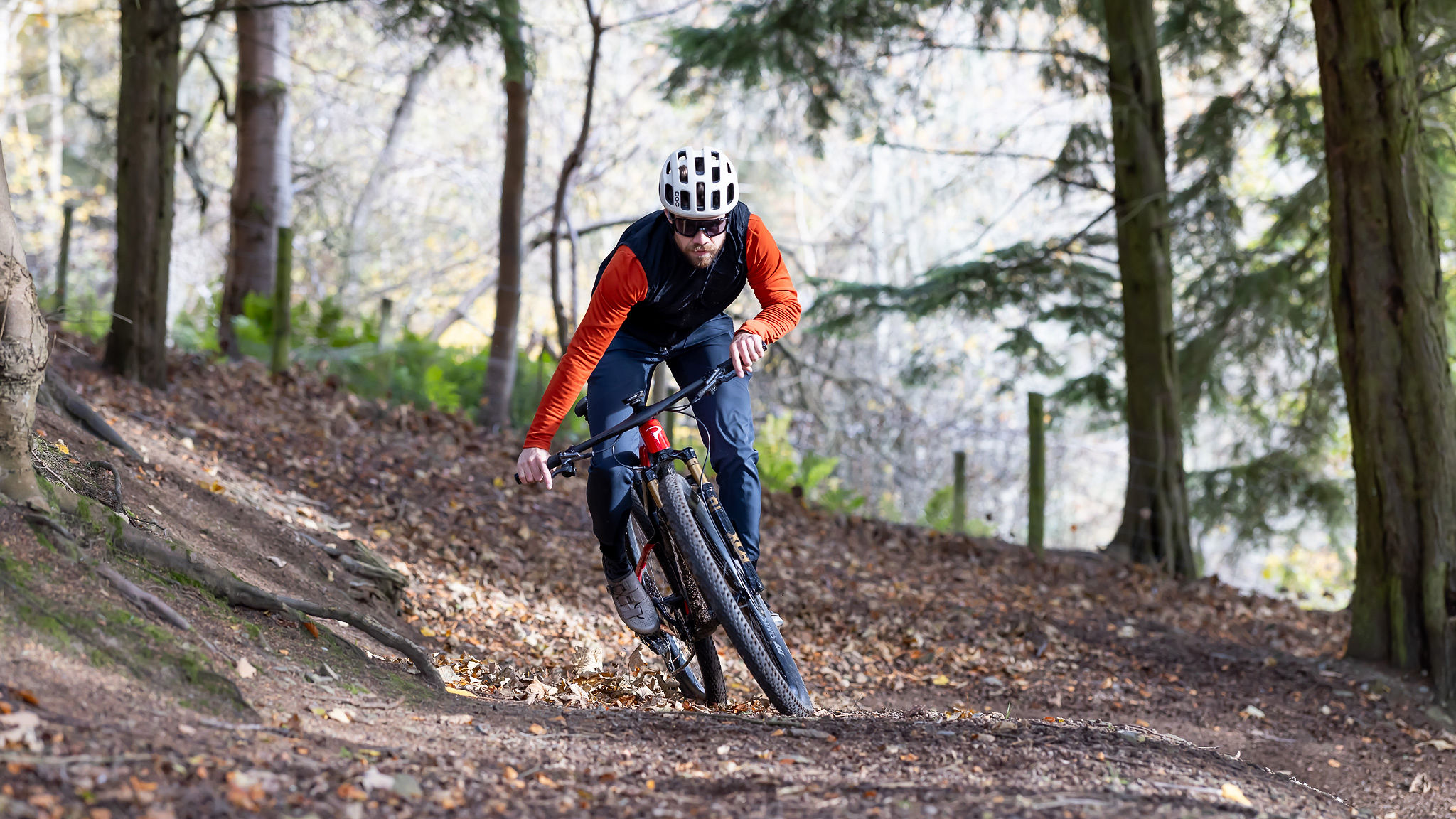Best mountain bike pedals – our favorite clipless and flat mountain bike pedals
Check out our pick of the best mountain bike pedals, covering all the options from trail and cross-country to enduro and downhill mountain biking

The debate of whether clipless vs flat pedals are the best mountain bike pedals has divided the MTB community for a long time. Although clipless (pedals that you clip into using a cleat on your shoe) has taken over MTB racing, the conversation of which is better for the everyday rider will bubble away for many years to come.
At Bike Perfect we aren't here to tell you what to ride, and our testers regularly switch between the two depending on what takes their fancy. Instead, in this guide we have brought together our very favorite clipless and flat MTB pedals that we have tested.
If you are a steadfast flat pedal rider? Then head over to our best MTB flat pedal guide for even more flat pedal recommendations. Is clipless more your thing? Well then check out our dedicated guide to the best mountain bike clipless pedals. On a tight budget? See our guide to the best cheap MTB pedals for affordable pedal options.
Best clipless mountain bike pedals
Why trust BikePerfect
1. Best clipless pedals for cross-country
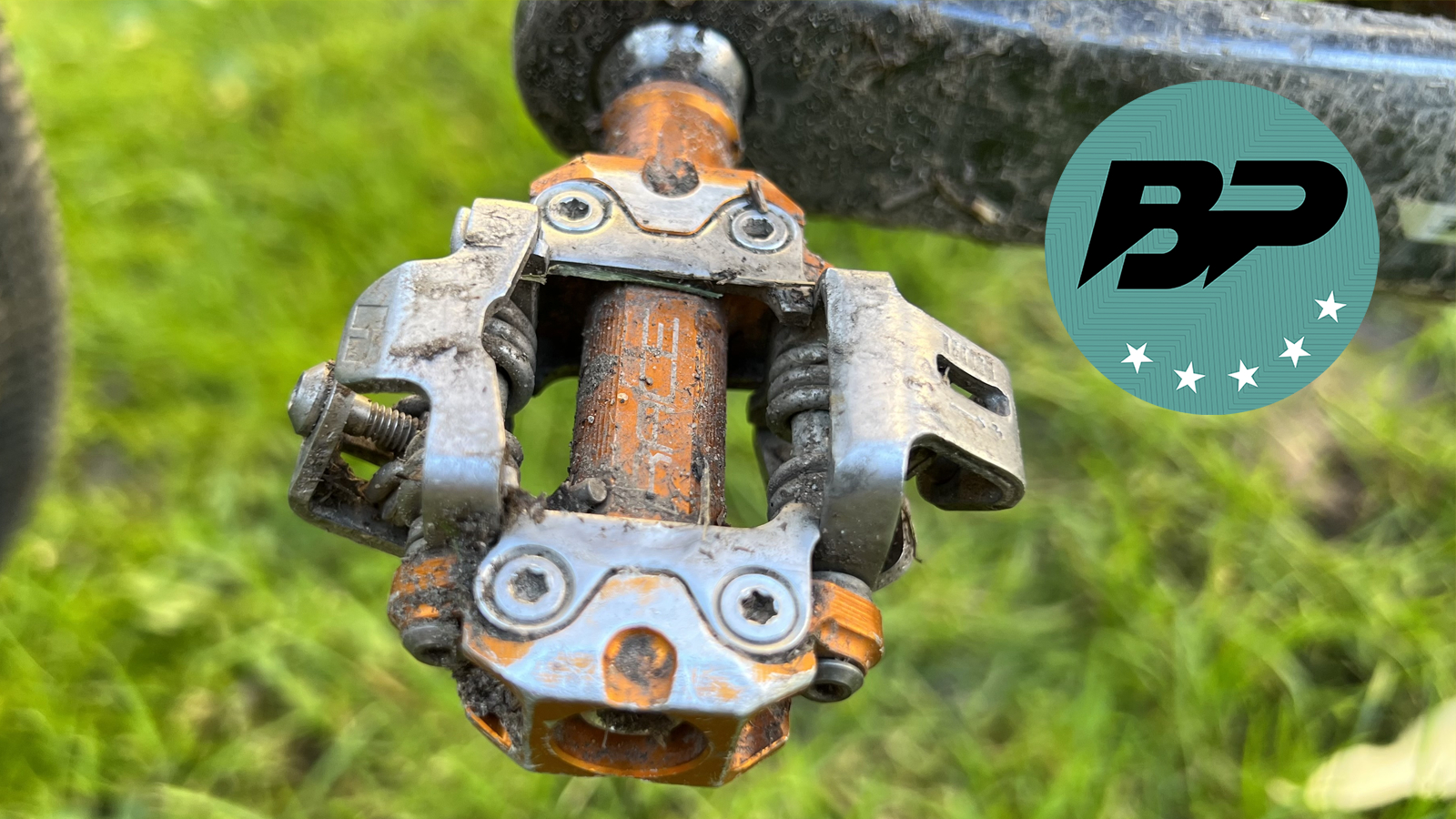
Specifications
Reasons to buy
Reasons to avoid
Hope has very quickly climbed to our cross-country clipless pedal top spot since the release of its Union RC pedals.
Hope's own double-sprung clip-in mechanism gives super consistent engagement and releases no matter the conditions. The action has a positive Shimano SPD-esque clunk when clipping in, however, rather than toeing in the Hope mechanism can be engaged by pressing down which makes clipping in easier.
Spinning on three cartridge bearings (outside end) and an IGUS bushing (inner side), the Union RCs have proved to be very weatherproof with no signs of developing play or obvious wear over months of testing. If you do need to rebuild them, the pedals can be stripped down and serviced. If needed, the pedals can even be sent back to hope for a pedal mechanism rebuilt if necessary.
The combination of excellent performance and solid durability meant the Hope Union RCs stood above the rest when we reviewed them.
Check out our Hope Union RC review for full details.
| Attributes | Notes | Rating |
|---|---|---|
| Support | Good connection with XC shoe when shimmed correctly | ★★★★★ |
| Weight | Competitive with main competitors | ★★★★★ |
| Durability | Tough and rebuildable | ★★★★★ |
| Value | High end price but worth it | ★★★★ |
2. Best value clipless cross-country pedals
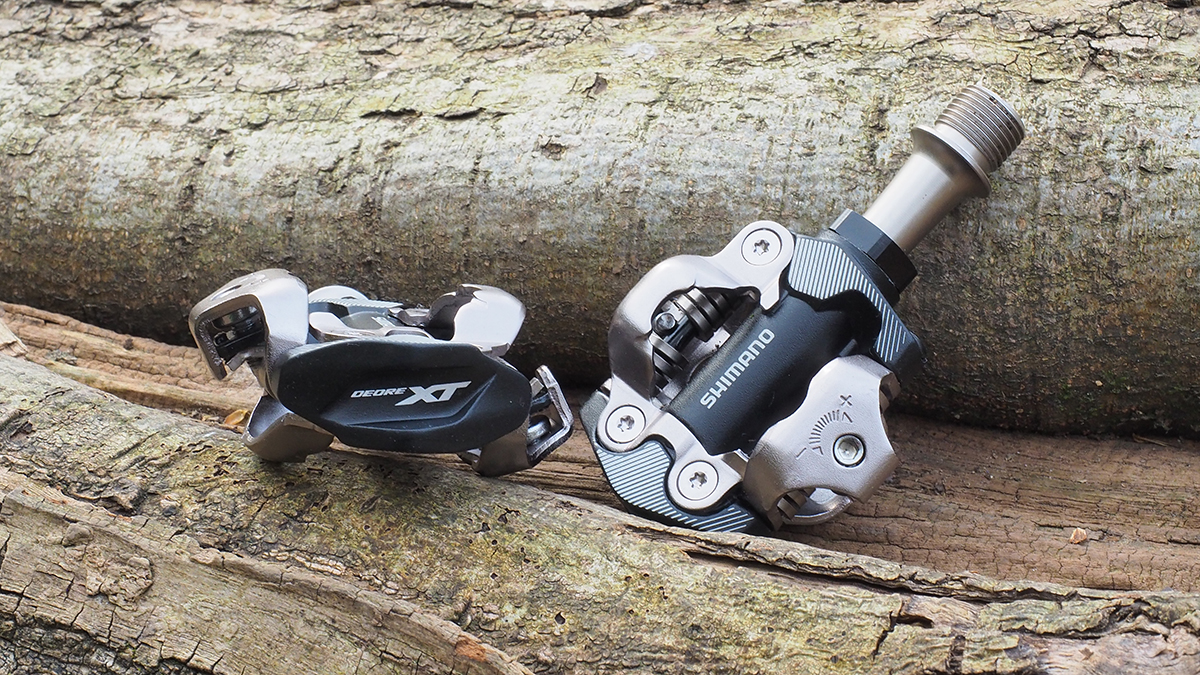
Specifications
Reasons to buy
Reasons to avoid
Shimano has dominated the MTB clipless space since they created the first off-road-specific clipless pedal. It comes as no surprise that they continue to produce some of the best pedals around and it's the second-tier XT pedals that set the benchmark in which all other off-road clipless pedals are judged.
Shimano's SPD mechanism requires a toe in motion to engage the cleat in the mechanism, giving a crisp and clear clunk when you lock into the pedal. Engagement tension can also be adjusted to fine-tune the clipping in and out feel.
We have several very well-used Shimano XT pedals that have required almost zero servicing despite regular riding in all weather over the years. If you do need to freshen them up, servicing is a simple job too. Although the cleats can be a little sticky in dry conditions, they have a long life span and spares are easily sourced.
As Sean Fishpool stated in his review, "nobody ever regretted buying XT SPD pedals". Read our full Shimano XT PD-M8100 pedal review.
| Attributes | Notes | Rating |
|---|---|---|
| Support | Decent support with most XC shoes | ★★★★ |
| Weight | Average weight | ★★★ |
| Durability | Easy to service and tough build | ★★★★ |
| Value | Extremely good value | ★★★★★ |
3. Best clipless pedals for enduro
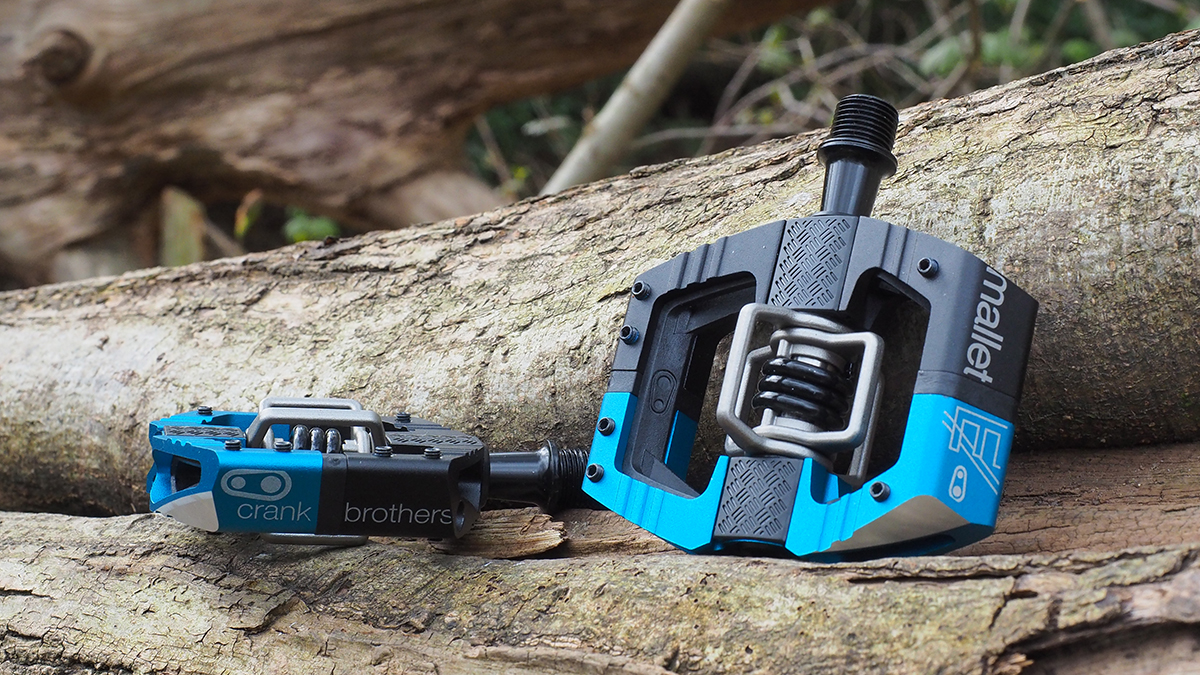
Specifications
Reasons to buy
Reasons to avoid
Crankbrothers Mallet E hits a rowdy trial rider or weight-conscious enduro sweet spot, combining Crankbrothers mud shedding and floaty clipless mechanism with a medium-sized platform for extra stability and pedal protection.
The double-sprung jaws of Crankbrothers' clipless mechanism have proved very popular with gravity riders for several reasons. They are easy to clip into as they don't require any toeing in, instead, you can slide forwards, backward, and press in from above. They also offer more float and wider disengagement angles allowing you to move more freely when throwing your weight around the bike.
Shoe-to-pedal clearance sometimes needs to be tuned with shims under the cleat or by swapping ‘traction pads’ slotted into the two-tone anodized body to get the desired feel. The Mallet E also has six adjustable pins that can be screwed in or out to give a slidey or more locked-down connection with the pedal body.
The reliability of recent Crankbrothers pedals has been excellent, thanks to the combination of the more premium Enduro MAX bearings at the outer end (they have more contact area for load bearing), and a self-lubricating ‘plain bearing’ sleeve at the inner end.
There are eight different versions of Mallet from the entry-level E11 to the Mallet DH version, giving options for most wallets and preferences. Looking for something a little more trail-orientated? The Crankbrothers Mallet Trail pedal is an excellent slimmed-down option too.
Check out our full review of the Crankbrothers Mallet E pedals.
| Attributes | Notes | Rating |
|---|---|---|
| Support | Platform gives loads of support to trail shoes | ★★★★★ |
| Weight | Good weight considering size | ★★★★ |
| Durability | Bearings last a long time | ★★★★ |
| Value | Expensive but durable | ★★★ |
Best flat mountain bike pedals
4. Best flat pedal
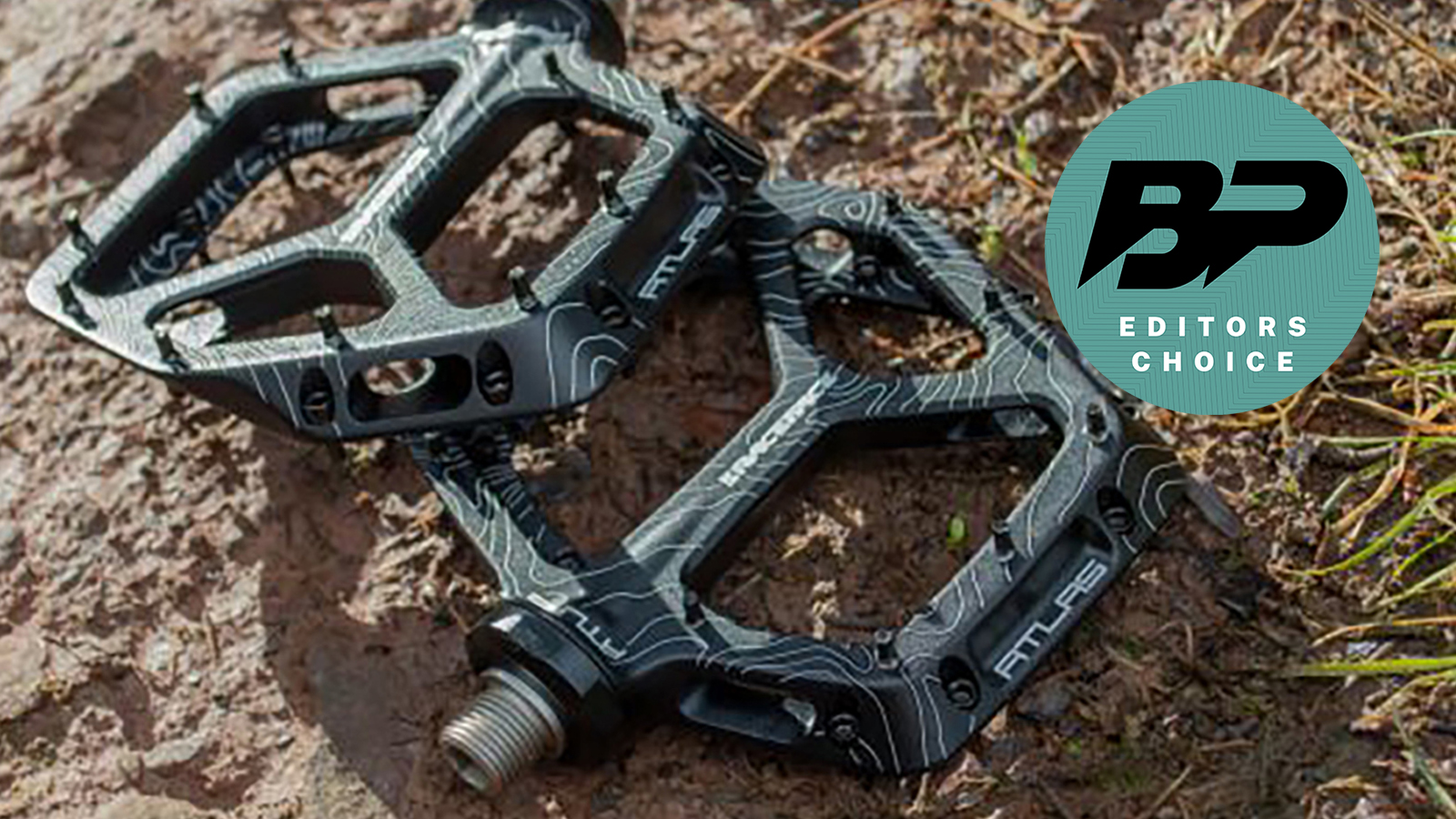
Specifications
Reasons to buy
Reasons to avoid
The latest edition of Race Face's Atlas pedal saw a massive overhaul of the design. The up-to-date Atlas features a wider platform, thinner body, easier bearing servicing, and comes with a lifetime warranty.
The large 110mm long by 108mm wide body gives loads of real estate to mount the 10 pins adorn each pedal face. At a svelt 14mm deep, the curved and chamfered low profile bodies of the Atlas pedals give a planted ride feel too, as well as keeping rock strikes to a minimum.
Over six months of testing we were seriously impressed with the support they give and the amount of grip on offer. That said, the locked-in feel isn't for everyone. Narrow pins are razor-sharp so those who like to shuffle their feet around while riding on the pedals may be better off with the Burgtec Penthouses below.
Our reviewer Rich Owen concluded: "The new Race Face Atlas pedals are seriously hard to fault", which is why he gave them the full five stars in his review.
For more, see our full Race Face Atlas pedal review.
| Attributes | Notes | Rating |
|---|---|---|
| Support | Large platform and grippy pins | ★★★★★ |
| Weight | Light for a platform pedal | ★★★★★ |
| Durability | Servicable and covered by a with a lifetime guarantee | ★★★★★ |
| Value | Very expensive for a flat pedal | ★★★ |
5. Best flat pedal for grip
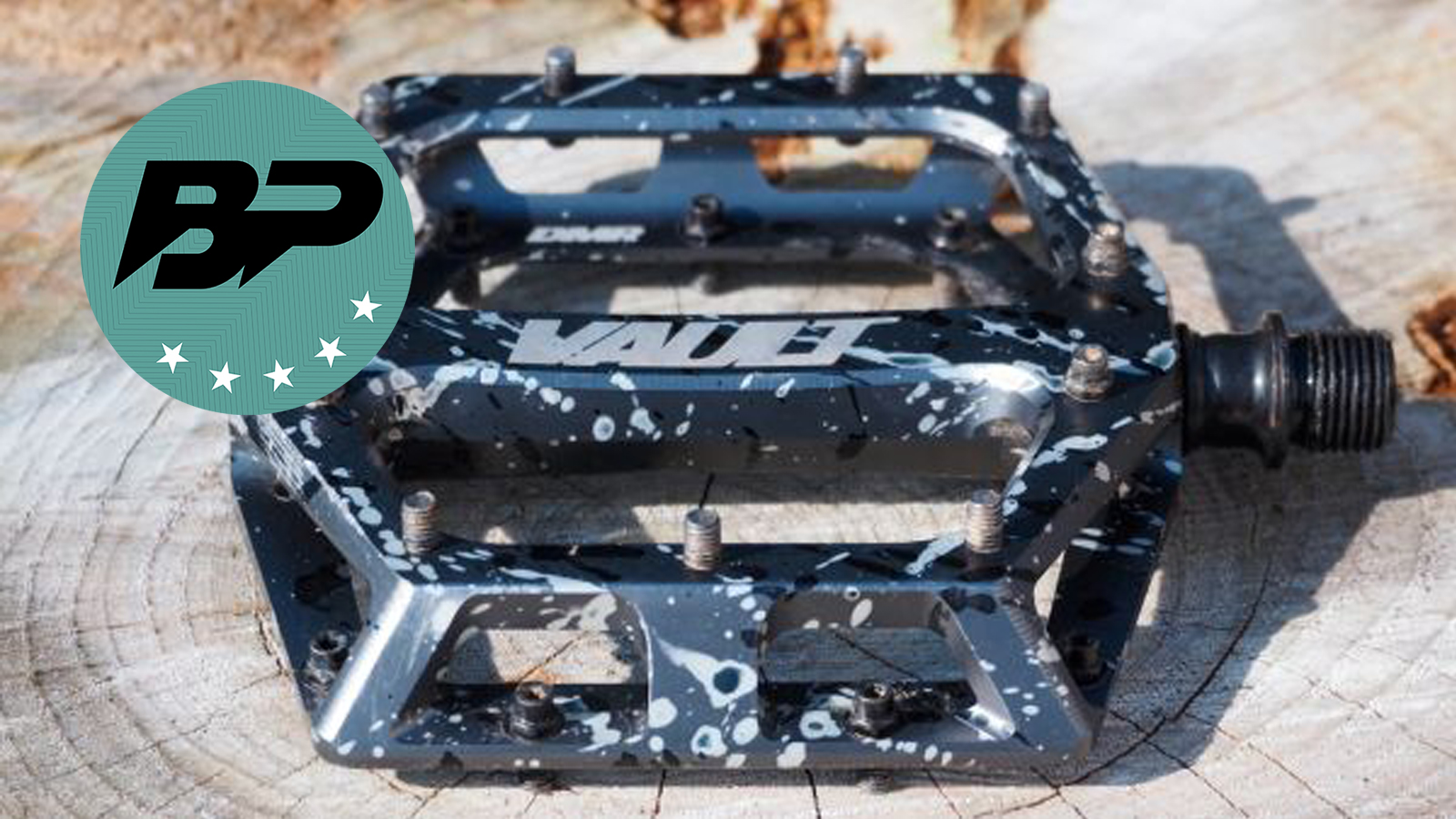
Specifications
Reasons to buy
Reasons to avoid
DMR has been one of the leading flat pedal manufacturers for the last 20 years, the Vault may have been originally released a whole decade ago yet it stands the test of time as one of the best mountain bike pedals ever.
The Vaults come in several different levels, including the premium lightweight Vault Mag SL, but for those who want their pedals to look good for as long as possible these SE with their Triple Anodised finish are the ones to go for.
No matter the finish or axle material, all the Vaults use the same 105mm x 105mm square, concave body, which is loaded with 11 replaceable steel pins per pedal face four stubby pins on either side of the axle to enhance the concave feel.
Although the 17mm depth is a little thick by modern standards, the Vaults platform layout is the reason so many riders over the years swear by the Vaults. The concave shape gives a great connection with your shoe and helps the pins do their work on rough descents.
Our reviewer Rich Owen said: "if you're looking for super dependable grip on a pedal that can laugh off big hits, then the DMR Vault is very hard to beat."
Not a fan of the Liquid Camo finish, well don't fret as the Vaults come in loads of different color options. There is also a Vault Midi size for riders with smaller feet.
For more details read our DMR Vault SE review.
| Attributes | Notes | Rating |
|---|---|---|
| Support | Concave shape securely grips shoe soles | ★★★★★ |
| Weight | Not bad, but thicker platform adds weight | ★★★ |
| Durability | Tough anodized finish and servicable | ★★★★★ |
| Value | Decent | ★★★★ |
6. Best flat pedal for durability
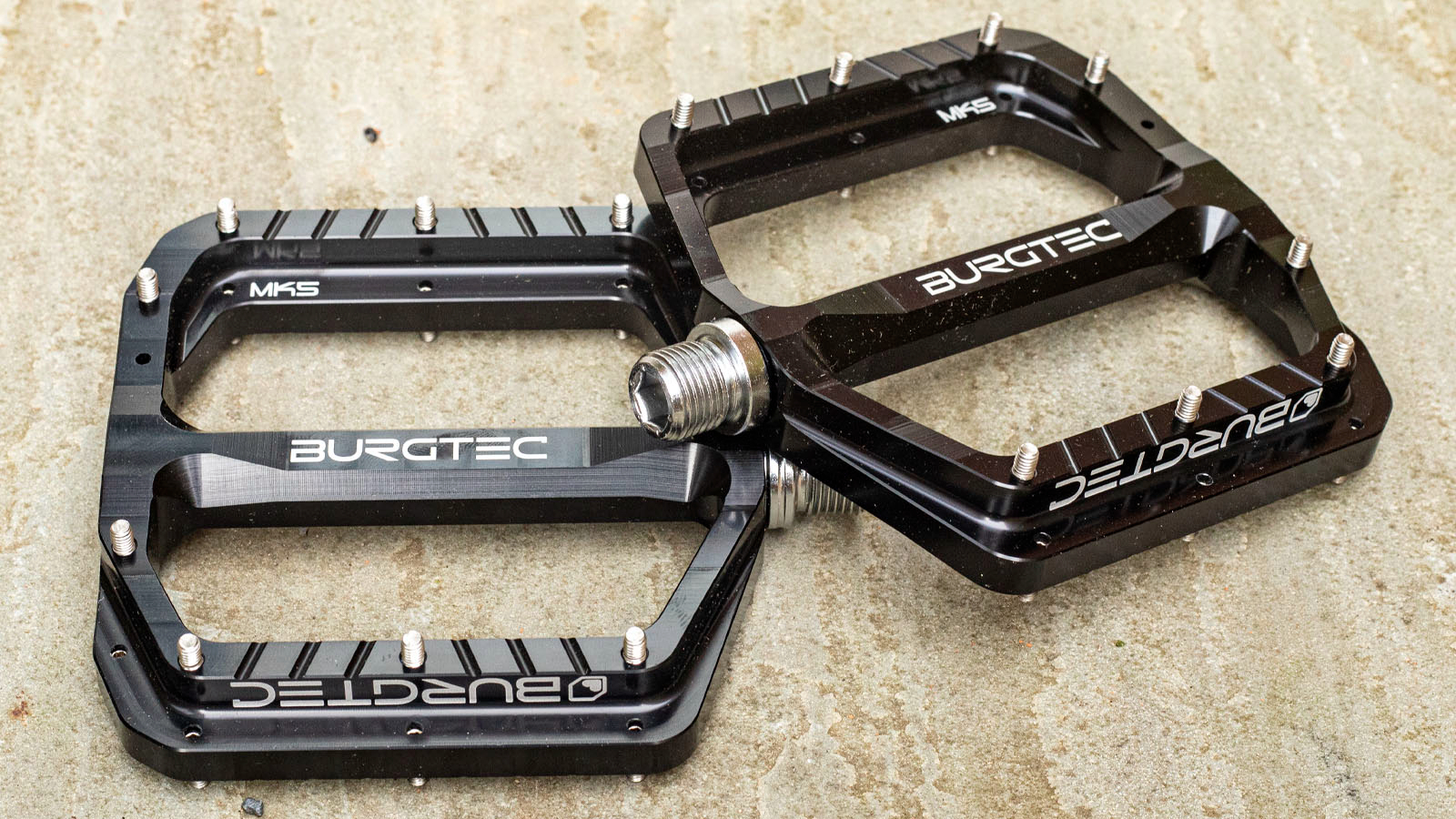
Specifications
Reasons to buy
Reasons to avoid
Burgtec's Penthouse Flat has long been one of the grippiest and most durable flat pedal options on the market. Now in its fifth generation, Burgtec has refined the Penthouse Flat to be lighter, slimmer, and even more grippy than ever.
If you are looking for a pedal that can handle years of riding abuse, weather conditions, and indiscriminate jet washing then the Penthouse Flat is the one to get. Our reviewer Mick Kirkman says his three-year-old Penthouse Flats, "have done thousands of kilometers, and are undoubtedly the longest-lasting flat pedals I’ve ever used".
This is all thanks to Burgtec’s bearing design, using double water-resistant Igus ‘W300’ bushes and a sealed cartridge bearing tucked behind a separate rubber seal lip on each pedal. The axle is made of a tough steel blend called EN24T and the redesigned 7075 aluminum platform has been refined for a more concave profile, fresh pin locations, and 7 percent more real estate.
When riding, we found the Penthouses' platform offered plenty of underfoot support and the concavity of the pedal body helped keep the foot in position on hectic sections. Tough pins resist damage well should you ground out the pedals and are well positioned to bite into sticky soles.
Find out more in our full Burgtec Penthouse Flat MK5 review.
| Attributes | Notes | Rating |
|---|---|---|
| Support | Good shape and size provide a solid platform | ★★★★ |
| Weight | Light especially considering the durability | ★★★★★ |
| Durability | Well made and excellant bearing seals | ★★★★★ |
| Value | Expensive but worth the investment | ★★★★ |
How to pick the best mountain bike pedals
There are a few questions you need to ask yourself before picking the best mountain bike pedals so lets get stuck in.
Flat or clipless mountain bike pedals?
There is no right or wrong answer here as it mostly depends on personal preference and riding style, both have advantages and disadvantages.
Clipless pedals are the go-to option for racing and cross-country mountain biking. As you are physically connected to the bike, clipless pedals offer better power transfer and security when riding on rough terrain. They also offer a more consistent foot position. However, if you do need to take your foot off to get around a tight corner or regain balance, it can sometimes be tricky to get clipped back in while riding, especially in muddy conditions.
Alternatively, many trail, enduro, and downhill riders still opt for flat pedals as they allow you to very easily take your feet off the pedals when riding steep or challenging terrain. That said, flat pedals require more technique to avoid your foot getting bumped off the pedal on rough terrain.
Generally, it's advised to learn to use flat pedals as they will force you to learn better techniques for bunny hopping and controlling the bike.
Do I need special mountain bike shoes?
For clipless pedals, you will need special shoes with fittings to attach cleats to the sole of the shoe. Clipless mountain bike shoes use a universal two-bolt plate that is compatible with all major brands including Shimano, Crankbrothers, Hope, and Time.
Any shoe will work with a set of flat pedals although a pair of the best flat pedal shoes are going to be considerably better than an old pair of trainers. Mountain bike specific flat pedal shoes combine stiffer soles for more support, stick rubber for the pedal pins to dig into, and reinforced toe and heel sections for added protection.
If you want to know more, head over to our best mountain bike shoe guide to find out everything you need to know,
Do you get different types of mountain bike pedals?
Other than the main difference between clipless and flat pedals, there are a few other different types of pedals.
Clipless mountain bike pedals come in different types based on riding style. Cross-country clipless mountain bike pedals will have a minimalist design to save weight while more trail or gravity-focused pedals will have a cage to add extra support to the foot, help guide the cleat into the mechanism, and protect the clip mechanism from rock strikes. Enduro and downhill pedals will generally have a larger platform with pins which so you can continue riding if you can't get clipped in.
There are also different types of clip-in mechanisms and cleats to consider as different brands have their own designs. We will go into more depth on those below.
While there are different platform sizes and pin layouts, flat pedals on the other hand aren't really discipline-specific. Trail riders may prefer lighter options while gravity riders will look for larger platforms, however, the choice is more often determined by personal preference.
Whats the best clipless mechanism?
There are several different clipless mechanisms available for mountain biking which have different clip-in and out actions, ride feel, and levels of adjustability.
The most common is Shimano's SPD (Shimano Pedaling Dynamics) system which is used across Shimano's off-road clipless pedal range and has been adopted by other brands such as Look, Ritchey, DMR, and Funn to name a few. Clip in action involves hooking the front of the cleat into the front static jaw, before pressing down to engage the rear of the cleat in the sprung mechanism. It sounds complicated but with a little practice, it quickly becomes second nature. The pedals usually feature release tension and standard or multi-directional release for easier disengagement.
Crankbrothers is the second most common clip-in system, the cleat uses the standard two-bolt cleat fitment but it's exclusive to Crankbrothers own pedals. The Crankbrothers mechanism consists of two parallel sprung bars that allow the cleat to be engaged by sliding forwards, backward, or vertically pushed into the pedal making it easier to clip in while riding. Unlike the Shimano SPD system, the clip-in feedback is subtle though which can take some getting used to if you are accustomed to the loud clunk of the SPD system. Crankbrothers don't have any adjustment, instead, float and release angles are changed by using different cleats.
Hope might be a small player in the pedal market but its range of pedals uses a Hope system. It looks very similar to Shimano’s classic SPD design but the steel clipless mechanism is spring-loaded front and rear.
There are a few systems that we haven't featured in this guide including Time and HT. Time pedals like the Time Atac XC6 or Speciale 12 have a system with a single sprung front jaw and static rear jaw. HT also has its own front-sprung mechanism and cleat.
While getting clipped in all use slightly different methods, getting your foot out again all use the same twisting motion to disengage from the pedal.
Due to the different mechanisms, cleats are specific to the pedal mechanism, good news is pedals almost always come with a set of cleats and all MTB cleats use the same two-bolt shoe fitment.
Is it worth upgrading MTB pedals?
Pedals are one of the few connection points you have to your bike when riding, so picking the right pedals is vital. Once you have found the type, shape, and style that you like, you will likely be presented with a couple of different price points. This is where things get a little more nuanced.
Weight is usually a defining factor as you move up the price scale. Brands will use premium materials like titanium and magnesium to reduce weight although this is going to be more important to weight-focused XC riders.
You may also get uprated bearings allowing pedals to spin more smoothly for better efficiency, resist dirt ingress for longer service intervals, or both.
Lastly, you may get some additional features or construction differences, for example, Shimano's XTR pedal features a shallower wider pedal body for more clearance and better shoe support than its cheaper XT pedal.
How we test MTB pedals
We have tested all these MTB pedals over several months to several years racking up countless miles on a wide range of trails to determine how they perform on the roughest terrains and the worst conditions. Pedals are ranked based on support, weight, durability, and value.
Meet the testers

Rich has been riding mountain bikes since the early nineties and testing bikes and kit for over a decade. While he does occasionally clip-in, his pedal of choice is definitely of the flat variety and he's tested every leading model over the years.

Guy Kesteven is Bike Perfect’s contributing tech editor. He spent a few years working in bike shops before starting writing and testing for bike mags in 1996. Since then he’s written several million words about several thousand test bikes and a ridiculous amount of bike components and riding gear.

Graham is all about riding bikes off-road. Based in Edinburgh he has some of the best mountain biking and gravel riding in the UK right on his doorstep. Usually found clipped in, sometimes Graham likes to play around on some flat pedals to mix things up.

An ex-elite downhill racer, Mick's been mucking about and racing mountain bikes for over 20 years. He's tested all manner of flat and clipless pedals so knows exactly what makes for a good pedal and what doesn't.
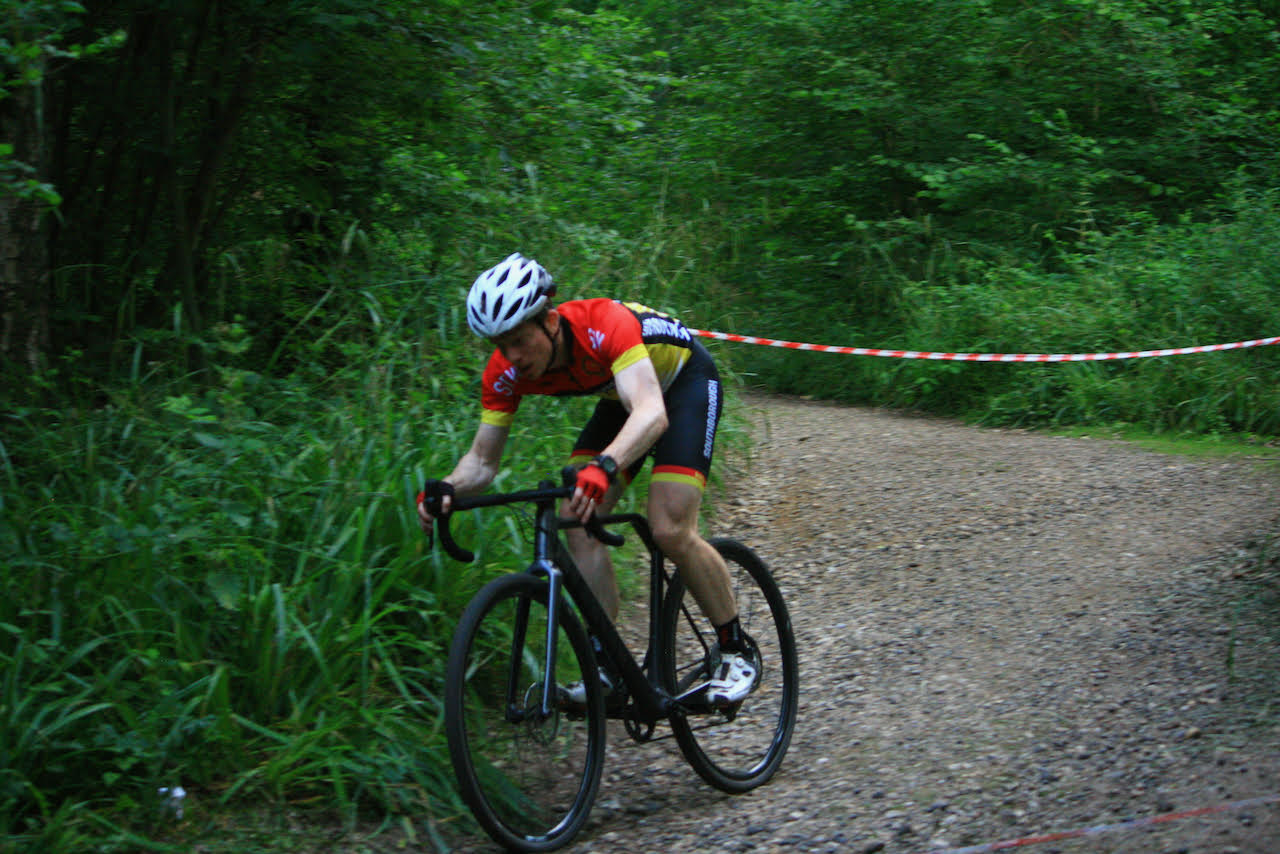
Sean has old-school cycle touring in his blood, with a coast-to-coast USA ride and a number of month-long European tours in his very relaxed palmares. Also an enthusiastic midpack club cyclocross and XC racer, he loves his role as a junior cycle coach on the Kent/Sussex borders, and likes to squeeze in a one-day unsupported 100-miler on the South Downs Way at least once a year.

Guy Kesteven has been working on Bike Perfect since its launch in 2019. He started writing and testing for bike mags in 1996. Since then he’s written several million words about several thousand test bikes and a ridiculous amount of riding gear. He’s also penned a handful of bike-related books and he reviews MTBs over on YouTube.
Current rides: Cervelo ZFS-5, Specialized Chisel, custom Nicolai enduro tandem, Landescape/Swallow custom gravel tandem
Height: 180cm
Weight: 69kg
